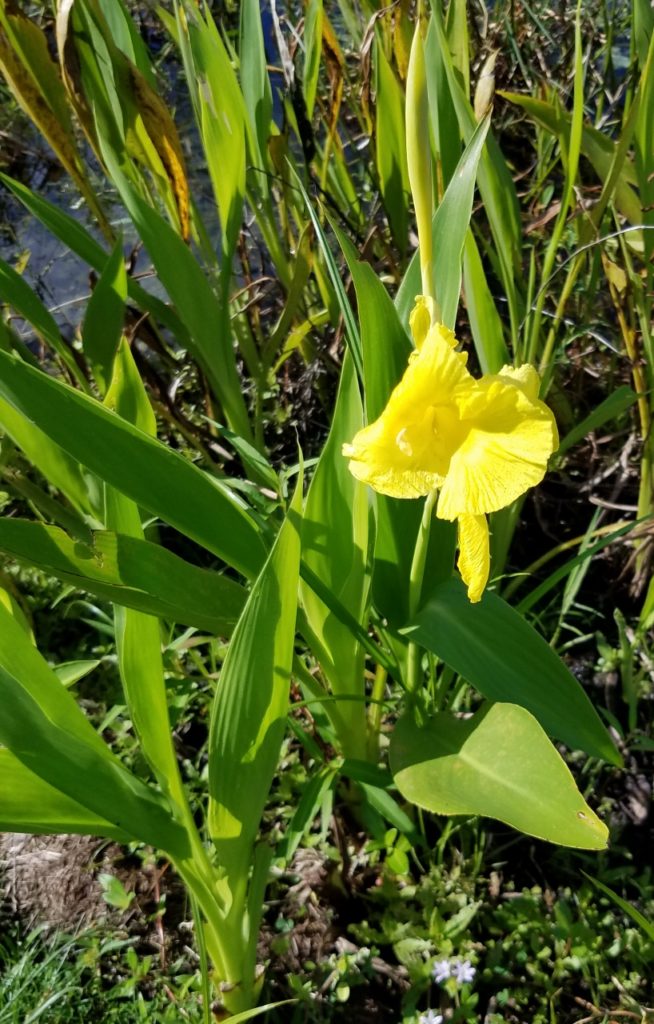
Golden Canna
Canna flaccida
Golden Canna is also called Bandana (not Banana) of the Everglades. It is found from Georgia thru Florida and west to Texas. Winter growth is ratty looking in South Florida due to the halt of new growth and in northern areas it is killed to the ground by frost.
This is a colorful, tropical looking three foot tall plant for lake edges and retention ponds. It spreads by underground rhizomes and will produce a large mass in little time.
Bees nectar on the flowers and the canna, also called Brazilian skipper, butterfly both nectar’s on the flowers and lays its eggs on the young leaves. The caterpillar of this skipper has transparent skin enabling kids to see the breathing tubes and inner guts for a neat science lesson. For more info on this butterfly, click here.
The roots and young leaves may be edible, but check out this link, click here and do your own research before putting anything in your mouth. This article puts Canna in the Ginger order, although it is in the Cannaceae family.
I dug up a thick piece of root, cleaned it and put it on the barbie along with some fresh iguana for twenty minutes. After it cooled, I cut it open and ate the starchy insides which tasted like Jerusalem Artichoke.
Next camping trip, you may want to try Canna, Cattail (sprouts, roots, or young pollen spikes), the tender tips of Smilax and other edible wild plants to go along with the fish you catch.
Canna is often used in mitigation plantings along lake or pond edges. The soil needs to be black with organic matter. That is often at the northwest corner of the lake where floating plant material is blown in by our dominant southeast breeze.
Otherwise, you will need to fertilize, which is not wise to do near waterways. The idea is to plant Golden Canna to capture nutrients from lawns before they enter the waterway.
A low spot in the yard can be covered with compost or lots of leaves, grass clippings etc. which will decompose into muck.
Plant in this moist, rich soil using Joepye Weed, Prairie Iris, Duck Potato, Buttonbush, Swamp Hibiscus, Saltmarsh Mallow, various ferns, native grasses, Narrowleaf Sunflower, Florida Lily, American Crinum Lily, Meadow Beauty and Bloodroot.
The above plants can be used on a lake edge from the waterline to the grassline. Pickerelweed,Thalia, Bulrush, Waterlilies and Spikerush can be planted in up to two feet of water.
These will extend the planting from just a few to many feet into the lake. The waterline may rise two or more feet above normal during heavy rains and drown the lower level of plants.
This is why I usually plant in six inches or less of water and let the plants creep down into the lake themselves.
Make an island 20 feet out from the shore and landscape it with these plants along with Pondapple and Cypress. With a water depth of two or more feet, you will have a great nesting site for herons and other wading birds.
It is hard for raccoons and other predators to swim out to the island. They are vulnerable to alligator attack.
For more info, click here, and here.